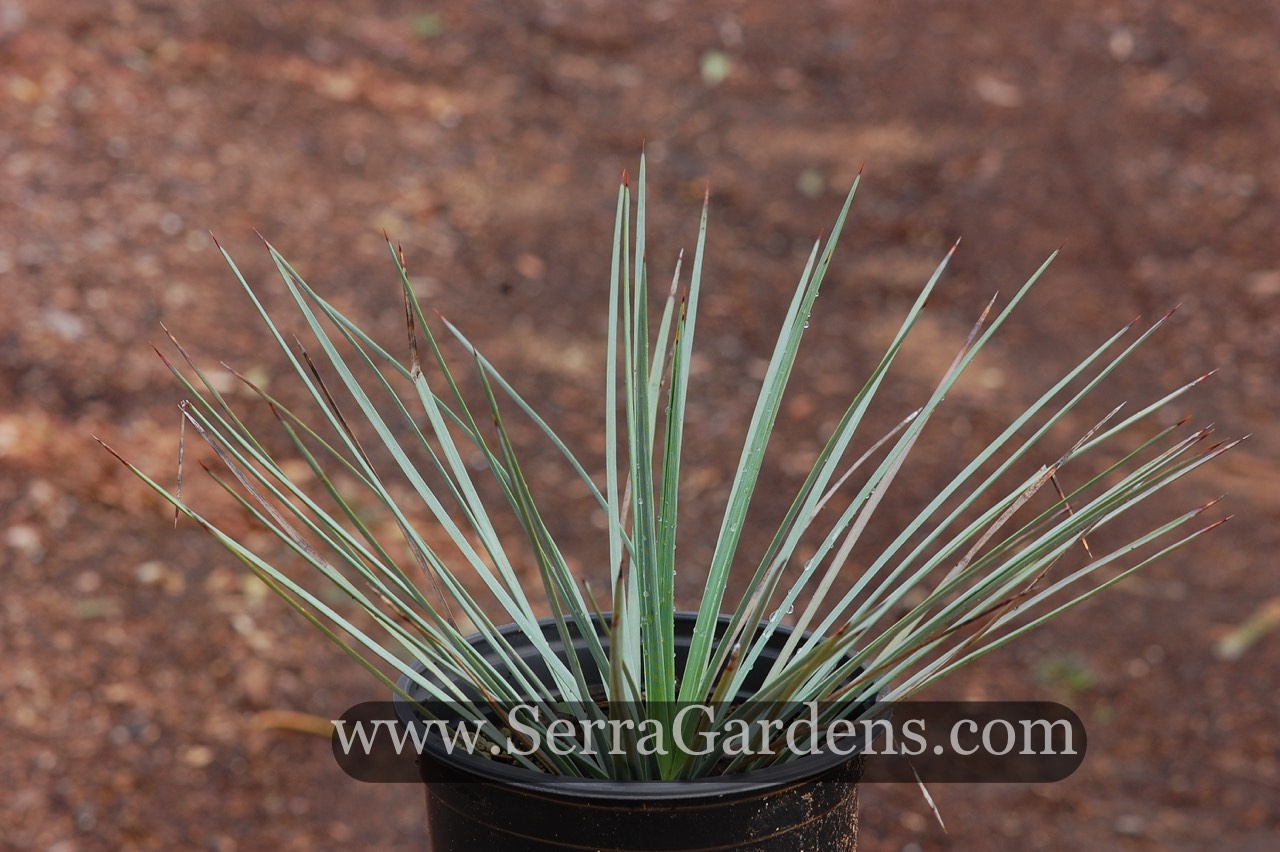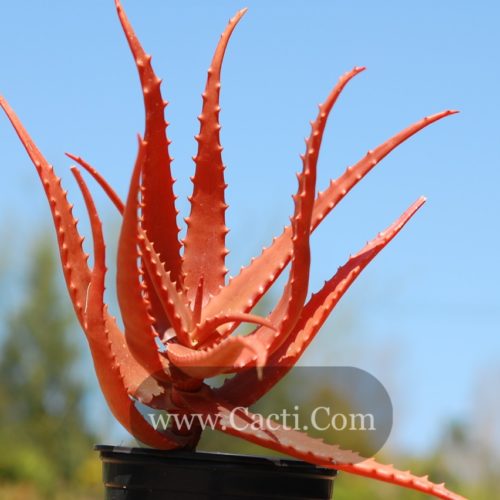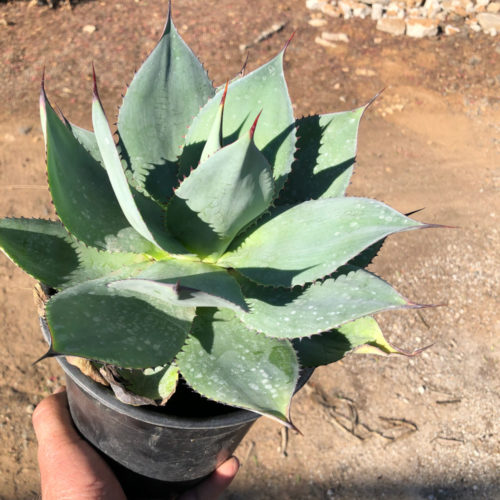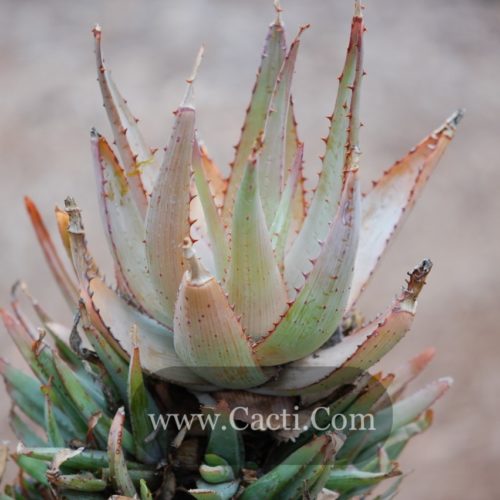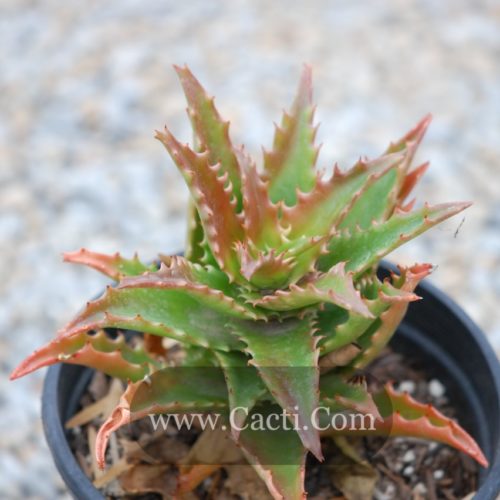Yucca whipplei aka Hesperoyucca whipplei
Horticultural Data | Shipping & Availability | Top
Yucca whipplei is a very nice plant for hillside native gardens. Foliage and globe form are very attractive as are its flowers. Leaves are very stiff and have a sharp terminal spine so locate the plants away from pedestrian traffic.
Yucca whipplei was recently moved to a separate genus of hesperoyucca as a result of genetic tests. It grows as a dense solitary rosette of silvery blue green leaves with brown terminal tips to eventually form a spherical shape. Mature plants (5 years or longer) bloom in spring to summer. The flower spike is very dramatic, growing quickly to 10-12’, and is covered in short branches of creamy white, bell-shaped flowers. After flowering the main rosette dies but (depending on the subspecies) usually forms many offsets at the base that can be divided and replanted or left as a colony.
Native Americans used Hesperoyucca whipplei leaf fibers for rope and fabrics. The flower buds were eaten, as were the seeds, which were roasted or ground into flour.
Like many yuccas it is pollinated in a symbiotic relationship by a moth (Tegeticula maculata), the California Yucca moth. Working at night, the female yucca moth collects sacks of pollen grains called pollinia and forms them into a ball. She then flies to another plant and lands on the ovary of a flower. Standing with her head near the stigma, she inserts her ovipositor into the ovary wall and lays a single egg. She then rubs her pollen mass against the central stigmatic depression, ensuring pollination. The pollinated ovary will now produce many seeds, ensuring an ample food supply for the larva.
Horticultural Data
Description | Horticultural Data | Shipping & Availability | Top
Names and Synonyms: Hesperoyucca whipplei
Common Names: Chaparral Yucca, Our Lord’s Candle, Spanish Bayonet, Quixote Yucca, Foothill Yucca
Family: Agavaceae
Origin: This plant is native to the Coastal Southern California and Baja California foothills and mountains where it is found growing in chaparral, coastal sage scrub and oak woodland plant communities.
Size Label: one-gallon
Height: 2-3′
Width: 3-4′
Cold Tolerance: 10 to 15°F; -12.2 to -9.4 °C
Heat Tolerance: Very high heat tolerance.
Light Requirement: Full sun
Water needs: Very drought tolerant.
Maintenance: Carefully divide clumps after flowering if desired.
Uses: A very nice plant for hillside native gardens. Its foliage and globe form are very attractive as are its flowers. It has very stiff leaves with a sharp terminal spine, so locate the Yucca whipplei away from pedestrian traffic.
Propagation: This plant can be grown from seed or plant division.
Problems: None.
Research Links:
https://en.wikipedia.org/wiki/Hesperoyucca_whipplei
http://www.smgrowers.com/products/plants/plantdisplay.asp?plant_id=3053
http://davesgarden.com/guides/articles/view/2110/
Shipping & Availability
Description | Horticultural Data | Shipping & Availability | Top
There is a minimum purchase of any 4 plants for online orders. All plants shipped bare root. Other sizes may be available for pick up from our growing grounds in Fallbrook, CA. For more information, give us a call at 760-990-4762.
Click here for complete Price List.
